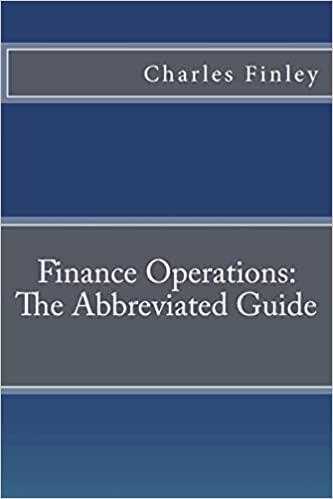Question
(Computing the standard deviation for a portfolio of two risky investments) Mary Guilott recently graduated from Nichols State University and is anxious to begin investing
(Computing the standard deviation for a portfolio of two risky investments) Mary Guilott recently graduated from Nichols State University and is anxious to begin investing her meager savings as a way of applying what she has learned in business school. Specifically, she is evaluating an investment in a portfolio comprised of two firms' common stock. She has collected the following information about the common stock of Firm A and Firm B:
Expected Return Standard Deviation
Firm A's Common Stock 0.14 0.16
Firm B's Common Stock 0.17 0.24
Correlation Coefficient 0.50
- If Mary invests half her money in each of the two common stocks, what is the portfolio's expected rate of return and standard deviation in portfolio return?
b. Answer part a where the correlation between the two common stock investments is equal to zero.
c. Answer part a where the correlation between the two common stock investments is equal to +1.
d. Answer part a where the correlation between the two common stock investments is equal to -1.
e. Using your responses to questions a----d, describe the relationship between the correlation and the risk and return of the portfolio.
Question content area bottom
- If Mary decides to invest 50% of her money in Firm A's common stock and 50% in Firm B's common stock and the correlation between the two stocks is 0.50 , then the expected rate of return in the portfolio is ______%. (Round to two decimal places.)
The standard deviation in the portfolio is _____%.(Round to two decimal places.)
- If Mary decides to invest 50% of her money in Firm A's common stock and 50% in Firm B's common stock and the correlation between the two stocks is zero, then the expected rate of return in the portfolio is _____%. (Round to two decimal places.)
The standard deviation in the portfolio is _____%. (Round to two decimal places.)
c. If Mary decides to invest 50% of her money in Firm A's common stock and 50% in Firm B's common stock and the correlation coefficient between the two stocks is +1, then the expected rate of return in the portfolio is ______% (Round to two decimal places.)
The standard deviation in the portfolio is _____%.(Round to two decimal places.)
- If Mary decides to invest 50% of her money in Firm A's common stock and 50% in Firm B's common stock and the correlation coefficient between the two stocks is -1, then the expected rate of return in the portfolio is ____%. (Round to two decimal places.)
The standard deviation in the portfolio is _____%. (Round to two decimal places.)
e. Using your responses to questions a-----d, which of the following statements best describes the relationship between the correlation and the risk and return of the portfolio?(Select the best choice below.)
- The correlation coefficient has no effect on the expected return of a portfolio, but the closer the correlation coefficient is to negative one, 1, the higher the risk.
- The correlation coefficient has no effect on the expected return of a portfolio, but the closer the correlation coefficient is to one, the lower the risk.
- The correlation coefficient has a negative effect on the expected return of a portfolio, and the closer the correlation coefficient is to negative one, 1, the lower the risk.
D. The correlation coefficient has no effect on the expected return of a portfolio, but the closer the correlation coefficient is to negative one,1, the lower the risk.
Step by Step Solution
There are 3 Steps involved in it
Step: 1

Get Instant Access to Expert-Tailored Solutions
See step-by-step solutions with expert insights and AI powered tools for academic success
Step: 2

Step: 3

Ace Your Homework with AI
Get the answers you need in no time with our AI-driven, step-by-step assistance
Get Started


